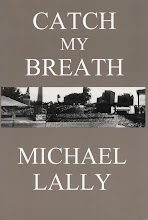Sunday, September 6, 2015
AN AFTERNOON AT MOMA
Went with my writer/artist friend Rachel to see the Jacob Lawrence exhibit at The Museum of Modern Art, the show of his complete famous migration series, 60 artworks depicting scenes from The Great Migration when multitudes of African-Americans left their homes in the South to move North for work and to escape Jim Crow racist laws and mistreatment.
I hadn't been in MOMA since I left New York for L.A. in 1983, just before the expansion of the museum began and eventually led to a total remodeling of it. I remembered a relatively uncrowded and quiet space to study the art of the first six decades of the 20th Century, a space that as soon as you entered you encountered art, a Claes Oldenberg soft sculpture (as I remember it) and Picasso's GUERNICA as you ascended the stairs.
Back then the museum store wasn't that big, waiting to purchase tickets to get in either took no time or little time, the artists whose work I'd fallen in love with were all represented. But today the line looped around several times (though there were so many ticket takers it moved quickly) and the entire too large entrance lobby was full of screens advertising the museum's movie series and photography galleries and bookstore and book collection and hardly any mention of actual paintings while the wall opposite the ticket counter was full of even bigger screens touting MOMA's new buildings around the world.
I felt like I had entered the corporate headquarters of some media and architectural conglomerate, not a space that had seemed sacred to me from the first time I entered it, and all the other times I spent afternoons there when I lived in the city in the 1970s and early '80s. And so many of my favorite works that I spent time with back then were not on display today.
But the Lawrence exhibit was well worth seeing, especially since it was the first time the entire series was shown together and the show ends on Monday with half the works going back to The Phillips Collection in DC. I felt fortunate to see these artworks I'd always admired up close with Lawrence's own captions, and the art and books and music associated with that period and subject matter in adjoining galleries.
And we also got to see the Yoko Ono show that confirmed how bold and brilliant she was from the start as an artist, the reason John first fell for her. But the highlight of the visit for me was the work of Kara Walker that I'd only read about and seen magazine photos of until I encountered a massive wall in one of the galleries housing contemporary art (that I otherwise mostly felt like an old fogey viewing because so much of it left me cold) with a narrative work of hers dominating it, one of the most powerful works of art I've seen in many years.
There are connections to the ancient world and its graffiti-like wall painting and frescoes of outsized sexual organs and other graphically sexual depictions, but done with the kind of silhouette figures that used to grace lockets on the necks of women in late the 18th and early 19th centuries, only all blown up to a huge scale and depicting racial injustices and stereotypes, satirizing them in a "transgressive" way and on this huge scale. The details, the more I looked, began to overwhelm me with their obvious and less obvious commentary on the life of an African-American woman in the pre-photography period when those kind of black cut out profiles and figures were popular.
The photo of it below doesn't even come close to having anything like the impact it has in person, or at least had on me. And I was grateful to have seen it. But next time I want to see the modern art I dig, I'll drop in on the much more human scaled and friendly wing of the Metropolitan Museum of Art's 20th Century American art wing.
Subscribe to:
Post Comments (Atom)


















1 comment:
These days I prefer a $9.99 or $14.99 Taschen book about a specific artist or movement over a crowded, corporate-sponsored museum show. Excellent reproductions with writing that is brainy but not pretentious.
Post a Comment